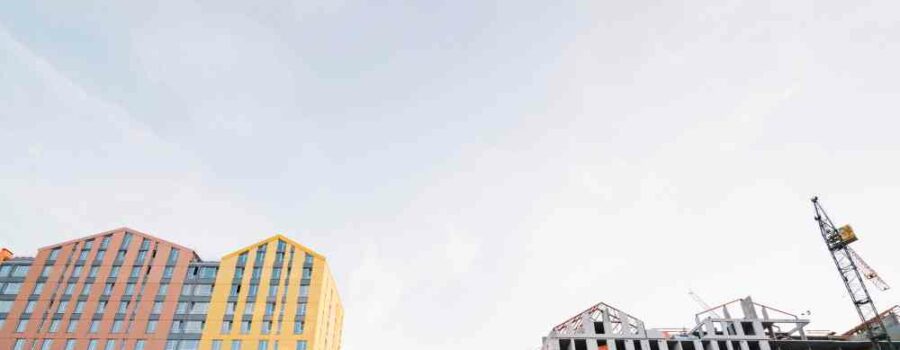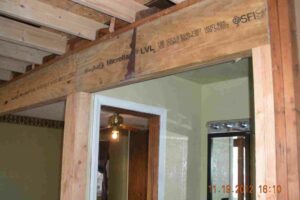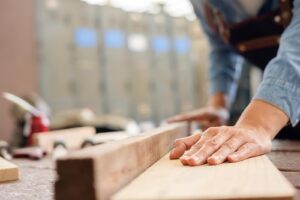Residential construction—where the art of building homes takes center stage.
In this post, let’s unravel the intricacies, methodologies, and essential components that shape the houses we call home. From historical evolution to modern-day practices, join us as we talk about residential construction.
Residential construction has undergone a remarkable transformation over the years. From traditional mud huts to awe-inspiring architectural wonders, the industry has embraced innovation and advancement.
The global residential construction market is set to reach an impressive $4.9 trillion by 2026, reflecting the increasing housing demand in an urbanized world.
Residential Construction Process
Let’s walk you through the process of constructing residential properties.
The Design Phase
The design phase plays a pivotal role in the residential construction process. Collaborating with skilled architects, engineers, and clients, we breathe life into ideas, ensuring a harmonious blend of aesthetics and functionality.
Choosing the right residential construction team is a crucial step in ensuring a successful and satisfactory outcome for your project. Here are some key considerations to guide you in selecting the right team:
- Define your project requirements
- Do your research and referrals
- Check credentials and experience
- Obtain portfolio and past projects
- Ask for client references
Material Selection
Selecting the right materials is a critical aspect of residential construction, as durability and sustainability must be prioritized. Concrete, steel, wood, and eco-friendly alternatives are carefully evaluated.
Notably, an alarming 40% of construction waste in the US originates from residential projects, driving the industry towards sustainable material choices to minimize environmental impact.
Foundations and Structural Systems
Every successful construction project starts with a strong foundation. In this phase, we explore different types, such as slab-on-grade, crawl spaces, and basements, each offering distinct advantages. Most homes in the US rely on slab foundations, known for their cost-effectiveness and efficiency in certain regions.
Framing
Framing forms the backbone of any residential structure, ensuring its strength and stability. This step involves understanding the right techniques, materials, and engineering principles employed in framing. Wood framing is a tried-and-true method cherished for its reliability and practicality, and many people still use this method to this day.
Electrical, Plumbing, and HVAC Systems
No modern home is complete without essential systems that enhance comfort, convenience, and energy efficiency. In this stage, we examine the intricate installation and integration of electrical, plumbing, and HVAC systems.
The global smart home market is poised to reach a staggering $158 billion by 2024, revolutionizing the way we interact with and control our living spaces.
Finishes and Interior Design
The final touches make all the difference. Finishes and interior design elements add character and personality to residential spaces. From flooring and wall coverings to cabinetry and fixtures, every detail contributes to the overall aesthetic appeal.
The choice of trendy interior finishes for residential homes can vary based on personal preferences, design styles, and current design trends. However, here are a few popular interior finishes that have gained traction in recent years:
Neutral Color Palettes
Shades of white, beige, gray, and earth tones provide a versatile backdrop that allows for easy customization and pairs well with various design styles.
Natural and Sustainable Materials
As mentioned, there is an increasing emphasis on using natural and sustainable materials in interior finishes. Elements such as reclaimed wood, bamboo, cork, and natural stone bring warmth, texture, and eco-friendliness to residential spaces.
Matte Finishes
Matte surfaces offer a sleek and sophisticated aesthetic while minimizing reflections and fingerprints.
Statement Tiles
Eye-catching tiles with bold patterns, intricate designs, or unique textures are making a statement in residential interiors. These tiles can be used as backsplashes, feature walls, or flooring, adding visual interest and personality to a space.
Mixed Metal Accents
Mixing different metal finishes, such as brass, copper, and brushed nickel, has become a stylish trend. Whether it’s in light fixtures, hardware, or decorative accessories, combining metals can create a visually appealing contrast and add depth to an interior.
Open Shelving and Minimalist Storage
Open shelving and minimalist storage solutions are gaining popularity, especially in kitchen and bathroom designs. These designs offer an airy and contemporary look while allowing for easy organization and display of curated items.
Biophilic Design
Biophilic design principles focus on incorporating elements of nature into indoor spaces. This includes incorporating natural light, indoor plants, living walls, and organic materials to create a harmonious and calming environment.
Smart Home Technology Integration
This includes features such as smart lighting systems, automated window treatments, voice-controlled assistants, and integrated entertainment systems.
Quality Assurance and Building Codes
Ensuring safety and compliance is a paramount concern in residential construction. Rigorous quality assurance processes, inspections, and adherence to building codes safeguard the well-being of occupants. Striving for adherence to regulations is crucial, as building code violations contribute to a significant number of construction-related accidents.
How Much to Construct a Residential Home?
The cost of constructing a residential home can vary widely depending on several factors, including:
- Location
- Size
- Design
- Materials
- Finishes
- Local market conditions
It’s important to note that construction costs are influenced by regional differences and can change over time due to various factors such as inflation, labor costs, and material prices.
On average, in the United States, the cost per square foot for residential construction can range from $100 to $400 or more, depending on the factors mentioned above. However, this is a general estimate and can vary significantly depending on the specific project.
For a more accurate estimate, it is advisable to consult with a local contractor, architect, or construction professional who can provide a detailed assessment based on your specific requirements and location.
Conclusion
Residential construction is a captivating blend of artistry, engineering, and meticulous craftsmanship. As the industry continues to evolve, it is critical to strike a balance between innovation and tradition, incorporating sustainable practices, and embracing technological advancements.
For information on residential construction jobs contact us. We’re a full-service construction contractor from Missouri. We have job sites in Kansas, Blue Springs, and Oak Grove. We specialize in house and commercial construction. We’re also the company to call when you need some structural repair done. Our project management team has years of experience between them. You’re assured of having the best people for the job. You can call us at (816) 433-8939. You can also reach us here.




